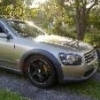R33 Sii - My Gt30 Upgrade Is Done. Lots Of Pics
Announcements
-
Similar Content
-
Latest Posts
-
By Equilibrise · Posted
Challenging mig welding thin Aluminium pipe and trying to fit it in, having to bend and twist, but got there in the end. Fits really well and can easily get a socket wrench in there now to put it on/off. I'm in the middle of another project, so haven't installed the suction pipe yet. I'll post some pictures and results when i do. -
I got it down to within 5 tenths of the silver time at Grand Valley in the X2010 but struggling to improve on that. Have put it aside for now. Got well into silver in the Mazda Roadster NR-A at Suzuka east course and the Alfa 155 touring car at Watkins Glen short though
-
I don't know if the hubs are different but it would be pretty simple to machine the sensor hole. If you want a set my hubs finally arrived for my billet uprights so I have a spare set
-








Recommended Posts
Create an account or sign in to comment
You need to be a member in order to leave a comment
Create an account
Sign up for a new account in our community. It's easy!
Register a new accountSign in
Already have an account? Sign in here.
Sign In Now